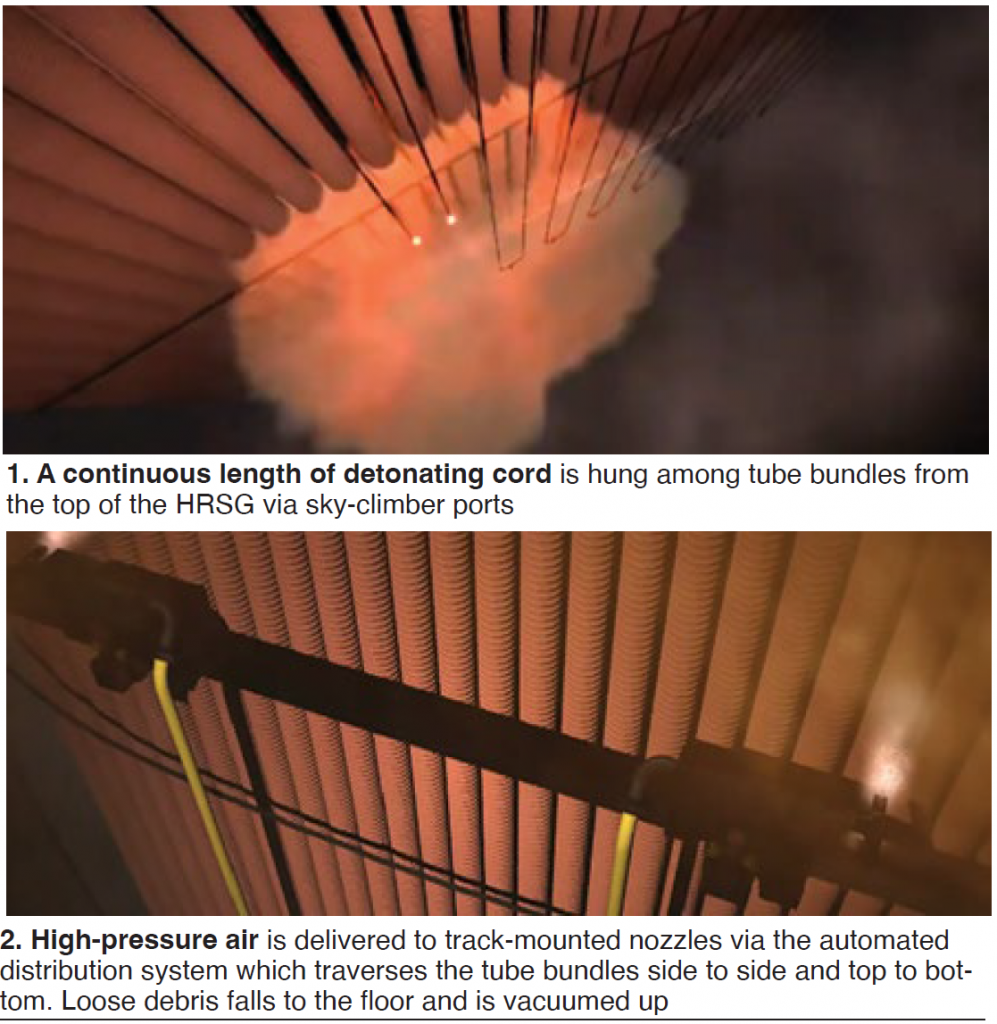The headline should not surprise any reader of the COMBINED CYCLE Journal. It’s a “given.” The challenge is how to maximize the saving at the least cost.
Until relatively recently, the widely preferred method for cleaning tubes in heat-recovery steam generators serving cogeneration and combined-cycle plants was dry-ice blasting. It effectively dislodges iron oxides, ammonia salts, and other foulants which drop to the floor and are shoveled into barrels for removal offsite. However, dry ice only reaches what it can “see.” Plus, the longer it sits at the plant awaiting use, the less effective it is.
Today, there’s a promising new option to consider—KinetiClean™. It’s getting positive reviews from owner/operators and industry experts, such as EPRI (results are available through the research organization’s HRSG program for members). The name derives from a patented shock-wave technique now owned by Groome Industrial Service Group, one of the pioneers in dry-ice blasting.
KinetiClean is a three-step process. First, shock waves created by a det-cord curtain (Fig 1) dislodges deposits from the HRSG’s tubes, then compressed air removes any loosened deposits that remain (Fig 2), and the floor is vacuumed clean.

Of importance is that detonation (a/k/a det) cord is a flexible linear explosive having a core of PETN (chemical name: pentaerythritol tetranitrate) encased in a textile outer jacket—it is not dynamite. Also, that the explosive does not come in direct contact with any plant equipment.
Regarding the safety aspects of PETN, keep in mind that it is installed and detonated by a team of well-trained licensed professionals. That it is “safe,” consider that KinetiClean has maintained an enviable EMR rating of 0.81 for the last couple of years. The Experience Modification Rating is a calculation used by insurance firms to determine workers’ compensation premiums. A rating less than 1.0 generally is considered good, or relatively safe.
Access a short video explaining the KinetiClean process. More detail—including actual footage of tube cleaning—is presented in the recorded webinar, “HRSG tube cleaning technology.”
The major advantage KinetiClean has over dry ice, based on Groome’s research and experience, is that it recovers about 75% of the backpressure lost to the deposits; dry ice typically recovers 30% to 50%.
Two case histories summarized in the webinar offer some insight to the results possible by implementing KinetiClean. The first concerned a 7EA-powered cogen unit that had not been cleaned in its 20-plus years of service. It had been derated to operate at 75% of its baseload rating and was in jeopardy of not meeting its contractual requirements.
The facility was able to return to baseload operation following eight 12-hr shifts of cleaning activity. Other results: 6 MW was recovered, stack temperature reduced by 12 deg F.
Case-history 2 compared the results of cleaning with dry ice and KinetiClean. Experience with dry-ice blasting of the HRSG behind an SGT6-5000F gas turbine indicated a pressure drop of 2-in. H₂O was to be expected. Six 12-hr shifts with KinetiClean reduced backpressure by 3.6 in.
The Groome team said a pressure drop of 3 in. offers an extremely good ROI. In this case the estimated annual fuel saving was $315,000, the estimated annual energy saving was $185,000.



